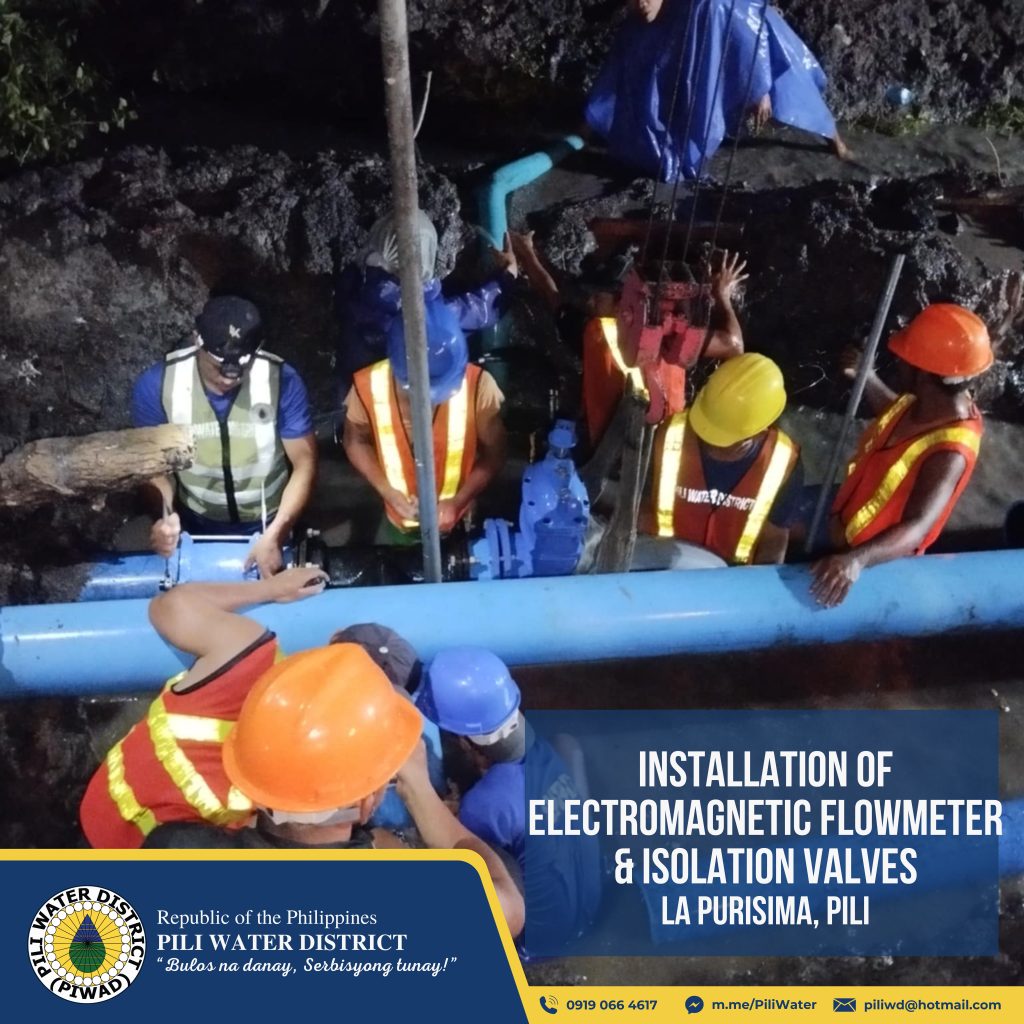By: Engr. Czerny Joshua Llagas
The primary causes of the Pili Water District’s non-revenue water are leaks and unauthorized connections. The water industry in our country, as well as other first-world nations, frequently deals with these water losses. In reducing water losses, many strategies and tactics have been created, but let’s start with the fundamentals.
The District developed District Metered Areas (DMA) in South Area, extending from the boundaries of (1) Pawili, Bula; (2) Ayugan, Ocampo; (3) Tagbong, Pili; and (4) San Jose-Sagurong, Pili. These DMAs utilized the data, techniques, and technologies from the successful DMA Pilot Test at La Paz Subdivision, Pawili, Pili. DMAs are isolated, metered regions that allow the District to monitor anomalies like leaks and bursts and respond rapidly to them. This approach reduces maintenance personnel’s idle time and enhances response time, and ultimately lowers water losses.
Commencing on April 22, 2024, the project aims for completion this year. This monitoring method is a key factor in economically and effectively managing leakages. After the installation of 28 flowmeters is complete, 13 DMAs—including 3 DMAs for the Poblacion Area—will be established. Pressure and flow monitoring will be carried out once the network has been segmented into DMAs. Those that exhibit a higher volume of night flow connection will thereafter undergo a more in-depth inspection using the Acoustic Noise Logger and Ground Microphone Leak Detector. This is done in order to pinpoint the leaks in the region so that the maintenance staff can quickly find the exact location of the leak in the distribution system. This process will continue across all DMAs until their NRW drops to 20%. Additionally, pressure management will be enforced to reduce leakage volumes during off-peak hours.
The DMAs in the South Area will serve multiple purposes beyond reducing water losses. It can also be used to facilitate water rationing and firefighting. The El Niño phenomenon significantly impacted the District, particularly the gravity sources at Tinangis and Curry, Pili, which are the main sources of water of the District. Drought conditions led to the lowest production levels in PIWAD’s history. To address this, isolation valves were installed in each DMA, allowing for equitable water rationing and efficient re-channeling of water.
Together, we can make it. You can also contribute by reporting leaks and bursts, and illegal connections. Such issues affect the water supply to all concessionaires, leading to pressure drops and potential service interruptions. As we adopt the outcomes of the DMAs on the service areas, we create a future where every drop counts and where water sustainability is not just a goal, but a tangible reality for the District.


